3093Views 13Comments
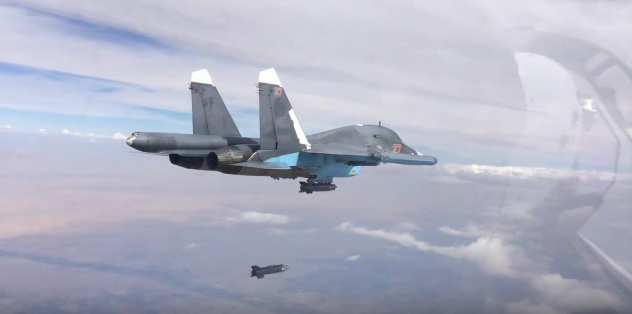
With the Su-34 the Bear is Not Pulling its Punches
By Bilal Khan
10 October 2015
I very much underestimated how far Russia was willing to go in Syria. Where I previously posited that its presence in Syria was focused on ensuring the survival of the Assad regime, it seems that Moscow has a few additional objectives, among them, the utter deprecation and rout of the Syrian opposition. And if the use of the Su-34 and 3M-54 Kalibr land-attack cruise missiles (LACM) are of any indication, Russia is not looking to let up on the pressure it is inducing. While Moscow maintains that its target is mainly ISIS, it seems the actual targets of its ire are the mainstay of the Syrian opposition. Just consider the following excerpt from a Wall Street Journal report from October 2nd covering Russia’s aerial bombardment:
Despite hitting some areas held by Islamic State on Friday, Russian planes continued to pound for a third consecutive day areas in northwest Syria where the extremist group isn’t present. These areas are controlled by a mix of Islamist and moderate rebel factions as well as the al Qaeda linked Nusra Front. Hitting these areas is consistent with what appears to be Moscow’s main goal: bolstering the defenses of the western coastal strongholds of Syrian President Bashar al-Assad and his Alawite minority sect.
The U.S State Department (via The Guardian) was even more stark with its observation, stating, “Greater than 90% of the strikes that we’ve seen [Russia] take to date have not been against Isil or al-Qaida-affiliated terrorists.”
The New York Times’ report from October 9th goes even further by claiming that ISIS is in fact capitalizing on Russia’s airstrikes on the other groups:
The Kremlin has said its military had entered Syria to fight the Islamic State, but the Russian forces have concentrated much of their firepower on insurgent groups aligned against President Bashar al-Assad, including the Nusra Front, Al Qaeda’s affiliate in Syria, and relatively secular groups like the Free Syrian Army. Rival insurgents say that the Islamic State, also called ISIS or Daesh, is taking advantage.
While it is true that Russia’s actions are feeding into the remaining integrity of the Assad regime, Moscow’s insistence on attacking the general Syrian armed opposition adds another dimension to its campaign. By targeting the middle (i.e. anyone not part of ISIS or the Assad regime), Russia is leaving the Syrian populace with two options, ISIS and Assad. In Russia’s eyes, those wanting to evict ISIS, pairing up – or at least tolerating – the Assad regime would become an attractive option. And that could (in Moscow’s hopes) end this war.
As I had written above, Russia is not pulling any of its punches. On October 1st the Russian Ministry of Defence announced that the Su-34 Fullback, a dedicated long-range strike fighter, would join the 28 combat aircraft already deployed in Syria. According to IHS 360 Jane’s, 4-6 Su-34s had been deployed to Syria by October 2nd. The Su-34 is a derivative of the venerable Flanker-series (i.e. Su-27/30/35), but incorporates significant design alterations to make it suitable for very long-range flights.
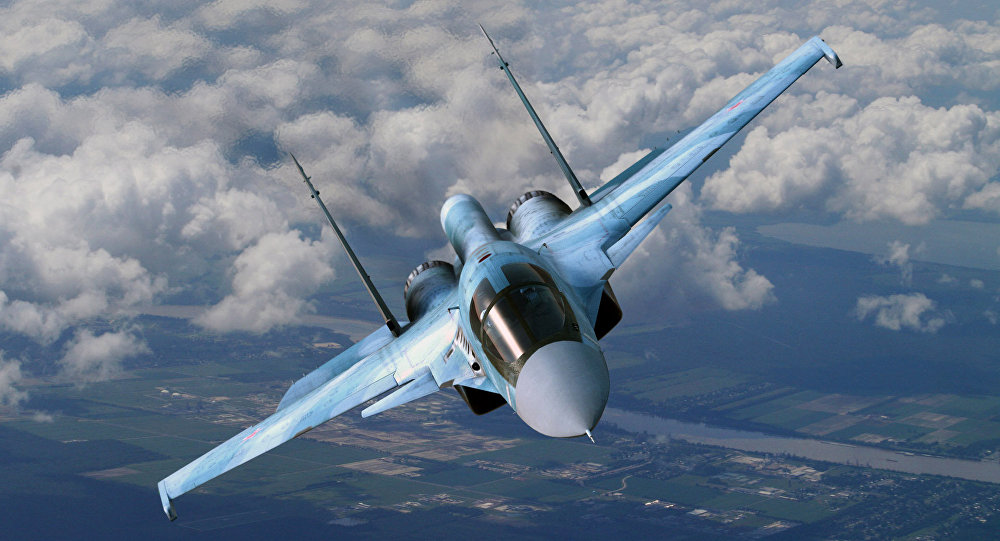
For example, the aircraft’s cockpit layout is side-by-side (like that of a bomber), as opposed to tandem (like the Su-30M, which is also in use in Syria). In fact, unlike its sister-derivative the Flanker, the Fullback’s cabin has enough overhead space behind the seats to enable the pilots to stand up and move (albeit to a very limited extent). While advances in technology often get the limelight in military analyses, it is important to account for the impact of human limitations such as focus and fatigue. The Su-34’s cockpit layout can enable pilots to maintain their operational efficacy for extended periods of time, a necessity when required to engage distant targets within a single sortie.
By virtue of being a derivative of the Flanker, the Su-34 has a level of commonality with the Su-30M, enabling Russia to streamline its maintenance and logistical support channels. This is a key advantage, especially in expeditionary missions where the supply of spare parts can be tenuous (compared to being based at one’s homeland) and where manpower efficiency and flexibility are of tantamount importance. The crews supporting the Su-34 and Su-30M are largely familiar with their respective sister platforms, thus enabling one to assist the other when necessary.
Although capable of air-to-air warfare, the Fullback is a strike-oriented platform, and as such it can be equipped with a wide range of air-to-surface precision-guided munitions (PGM). In Syria, the Su-34 was spotted using the KAB-500S PGM, a 500kg satellite-aided (via GLONASS) bomb similar in concept to the American Joint Direct Attack Munition (JDAM). It is unclear if the Russians will use stand-off air-to-surface missiles such as the Kh-59ME or Kh-31. It is conceivable that it could happen if the Russians decide to hastily engage distant (relative to the take-off positions of their fighters) targets, but for now, it seems that role has been taken on by the Russian Navy and its arsenal of land-attack cruise missiles (LACM).
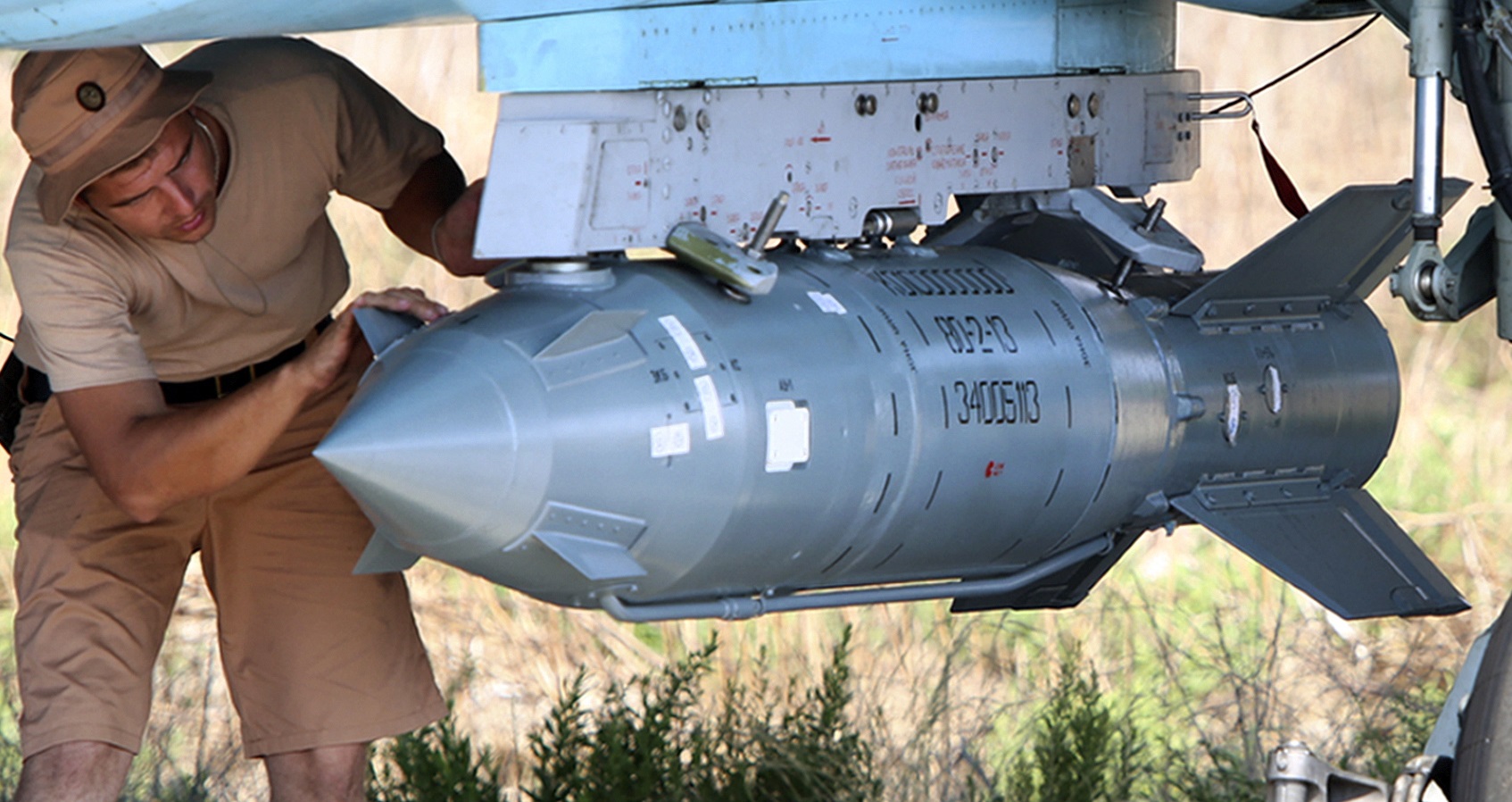
According to the Russian Ministry of Defence the Russian Navy fired 26 LACMs at 11 targets (IHS Jane’s 360). The Kalibr LACM has – according to the Russian Defence Minister – a range of 1500km. The Kalibr is basically a 3M-54E anti-ship missile equipped for land targets. This is achieved by equipping the missile with an inertial navigation system. For a better understanding of what this technology is, be sure to review Quwa’s piece on precision strike and anti-ship missiles to see how this technology works and why it is important). Based on the video footage released by the Russian Ministry of Defence, the LACMs were fired from a Gepard-class frigate and a Buyan M-class corvette.
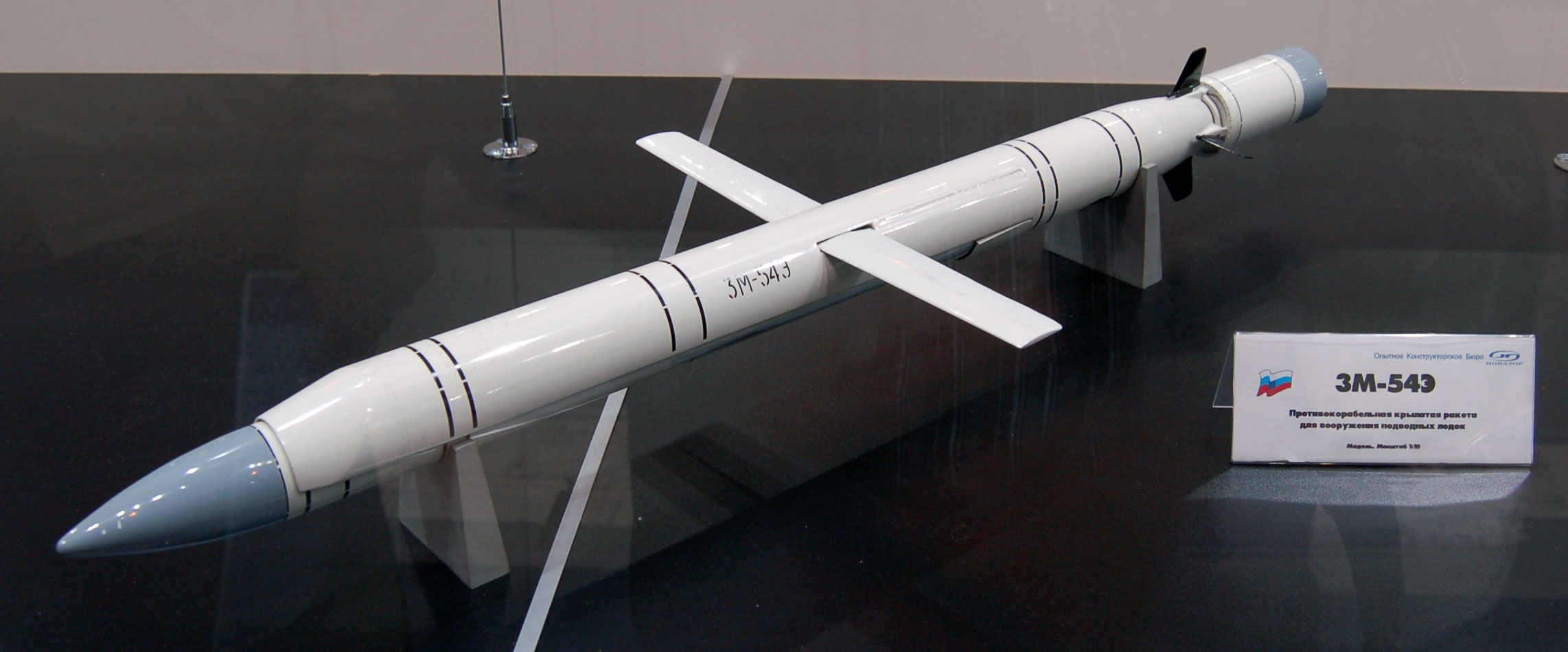
Although light combatants at 1930 tons and 949 tons respectively, the Gepard and Buyan M were designed to be modern but affordable littoral (i.e. close to the coast) defence and patrol ships. The Gepard and Buyan M are both equipped for anti-ship warfare as well as for protection against incoming missiles (through the use of close-in-weapons-systems). That said, by being able to engage distant targets in Syria, the Russians have demonstrated that these ships – despite their littoral and low-threat focused designs – are not to be taken lightly, especially by those who lack any form of genuine naval capabilities.
With a comprehensive set of naval and aerial assets being committed to fighting in Syria, it is clear the Russians are looking to achieve a series of significant military objectives. Among them, the utter deprecation of the Syrian opposition (with the apparent exception of ISIS, for now). It will be important to see if Russia’s breadth of involvement grows (given how the Russian Navy just entered the fold, could the Russian Army join as well? Could additional Russian Air Force units be deployed?) moving forward.

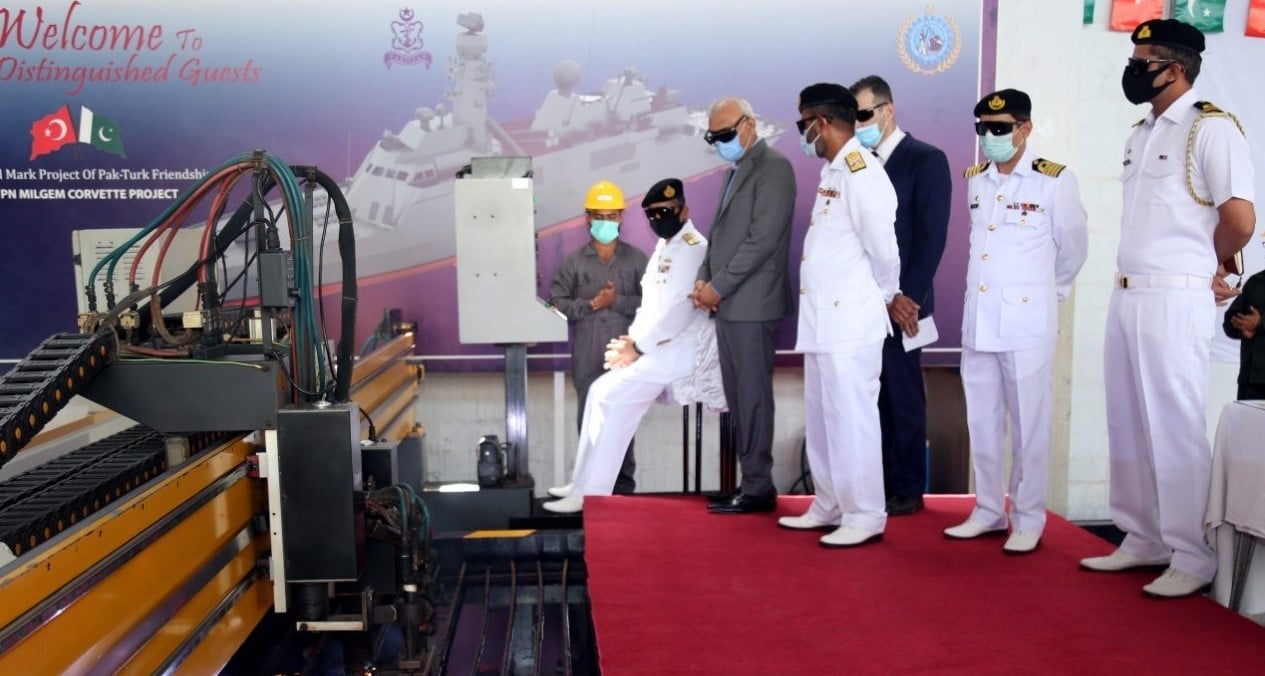
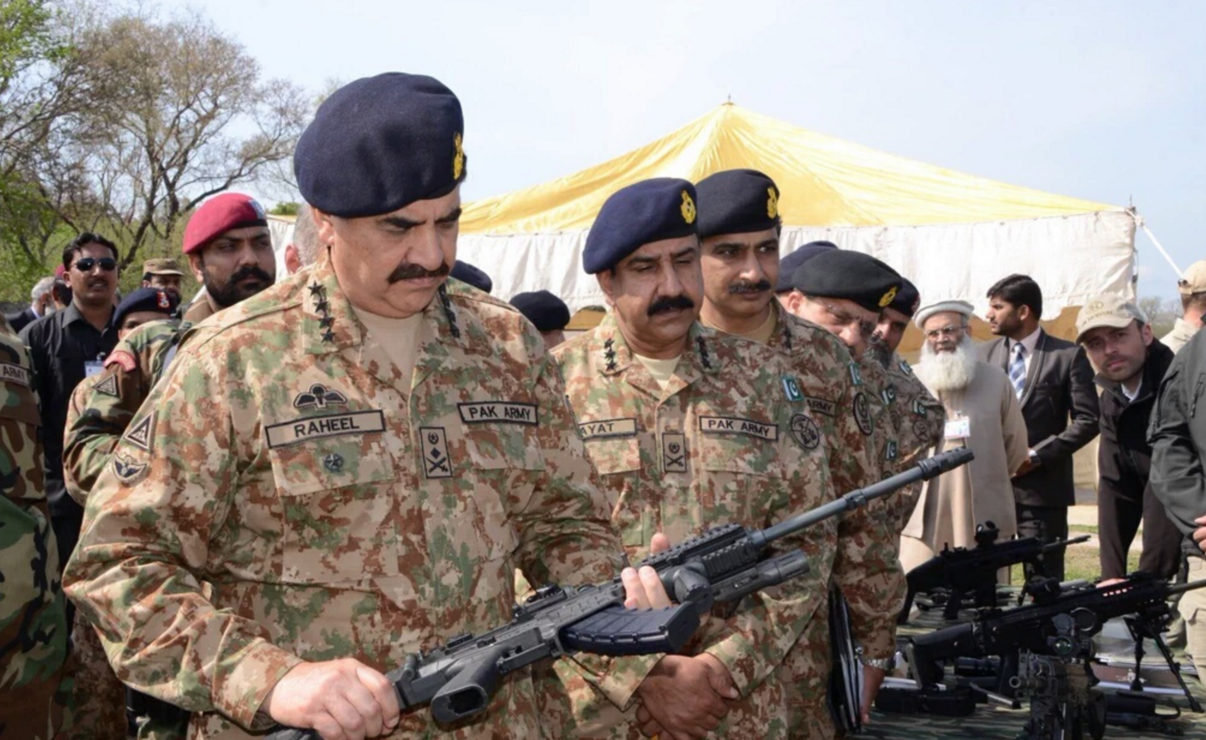
13 Comments
by jigsaww
I am happy that someone has stood up to the US to tell it that your free lunch is over. We ve seen in past 5 years US invading country by country in middle east and basically there has been no country to stand up and tell it to stop. Syria will in any case see the destruction because of objectives laid out by US. It will come to egypt and saudia as well in a matter of years.
Most of the reports coming out of nytimes and CNN are based on lies. What russia has basically done here is to reverse american campaign on US itself by using IS as excuse. Apparently and actually russia will target everyone that is with US because russia’s problem is not IS, assad, or rebes. they do not care about all that. The only thing russia cares is to give US a challenge and it will go to all extents. Syria just provided the perfect opportunity. Turkey is unlucky to have been involved because they will be tested. Saudia is starting to arm rebels more and more now in US support while US itself has offocially given it up yesterday.
The only problem is how much money russia can pump into this chest thumping to challenge US.
by saqrkh
Yes, I wouldn’t believe CNN, NYTimes, etc, out of the gate, but on the ground reports by individuals has lend credence that the Russian strikes are on the rebels in the middle (i.e. not ISIS, not Assad).
In the end we need to look at this from the angle of who gains what and why. The Assad regime was a key channel for Russia in regards to its interests in the region and its military industry. For the U.S, Assad was a decent interlocutor to help them with Iraq and the so-called War on Terror (the U.S actually worked with Syrian intelligence to interrogate suspects).
Both (Russia and U.S) would much rather deal with Assad than a new Syrian establishment that is distrustful of outsiders, which is the general mantra pushed by every rebel group, be it secular or Islamist.
That said, the Russians are going to work on grabbing more of Syria than what they had before the Civil War.
by Max Glazer
Russia said it’s attacking terrorists. Everyone that is running around Syria as part of an illegal armed group is a terrorist. Simple. Whether IS, Al Nusra, Free Syrian Army and everyone else. There is NO MODERATE OPPOSITION there. They are all terrorists. Just as bad as each other. USA CREATED the WHOLE situation for own geopolitical gains and is now crying foul because A) their little child is now a barely controllable menace and B) Russia has so far managed to ruin most of the work US has none.
IS is the MAIN target of Russian bombs. This blogger is either deliberately using US media for reference, which makes him as much of a worthless liar as they are, or is genuinely brainwashed. Not sure which is worse.
World doesn’t need chaos in the middle east which is what US and gulf monarchies are trying to cause. Russia is not just saving existing structure of government in Syria. It also safeguards itself since IS wants to spread to Central Asia and Caucasus. Russia can’t let that happen as consequences would be a catastrophe which would be good for USA. But REALLY bad for Asia and Europe.
by saqrkh
Can you refer me to third party sources (especially reports from on the ground in Syria) that corroborate Russia’s claims that it is mainly hitting ISIS? Also, why is it that the majority of Russian air strikes have thus have occurred in non-ISIS areas such as Idlib and not places like Raqqa, where ISIS holds territory?
by Max Glazer
Syrian military and Russian military. Provided you can read Arabic and/or Russian. Don’t bother with Syrian Observatory for Human Rights. They are a London-based organization linked to british conservatives and their affiliates.
Russians struck targets that Syrians have provided them with. As I stated above – it is IRRELEVANT which armed opposition groups are being bombed. Foreign-sponsored and armed opposition group can not be considered even REMOTELY to care for interests of average Syrian. They are traitors if nothing else if they are Syrians and they are enemy of the country if they are not. Majority of the combatants are mercenaries from other countries. Thus whether the target struck belongs to Islamic State, Al-Nusra Front, Free Syrian Army or any other group is moot. They are enemy combatants responsible for the entire war. Thus should be destroyed. And Russia is helping Syria do just that.
by saqrkh
Still does not seem like they’re really battering ISIS, the group just made in roads in Aleppo.
by Max Glazer
They strike command centres, training camps, weapons and ammo dumps. Basically they are cutting of the air and blood from ISIS. No need to slaughter the sheep as new will come to replace them. They’ll run away when they are low/out of ammo and the orders on what to do don’t come during Syrian Arab Army assault. Russians also brought in Krasukha-4 ESM/ECM system. Take a guess what for…
Syrian military requests a strike on certain location – Russians do it. Islamic State or other terrorists. They DO NOT focus on Islamic State alone.
by saqrkh
That wasn’t my contention to begin with, I am asking for credible info proving that the Russians are in fact serious about ISIS, especially in light of the fact that ISIS has made gains on the ground following the strikes.
by Max Glazer
Do YOU have any credible info that Russians are in fact NOT serious about ISIS? Also who claims the gains? Last time I checked when someone takes out your C3I centres, weapons/ammo dumps and blows up your assets as well as conducts coordinated assaults with air cover, you would CONCEDE the ground. Syrians claim that they are the ones who made gains.
by saqrkh
Yes, when someone takes out your command centres and ammunition dumps, you lose ground. But how can we verify that it was equally concentrated on ISIS as it was the other groups?
As for ISIS’ gains, observers on the ground reported it from Idlib.
http://m.ft.com/cms/s/0/f058e1c4-6e97-11e5-8171-ba1968cf791a.htm
It was also reported in Aleppo.
http://www.theguardian.com/world/2015/oct/10/russian-airstrikes-help-isis-gain-ground-in-aleppo
If you’re going to argue that ISIS is in fact getting hit, then you need to demonstrate that they’re losing ground, and I mean specifically ISIS. Bashar’s animosity with the other groups has long been established, but just because they’re getting hit hard doesn’t mean ISIS is getting hit hard as well.
by Max Glazer
Financial Times and The Guardian for reference? Considering their history of blatantly lying and twisting everything they can about Russia, I recommend you find new sources. Forget EVERYTHING british. Long ago discredited itself. I trust Russian military statements more then some junk thrown by western media.
by Max Glazer
If Syrian military can’t take ground then they can’t take over ground. But that doesn’t mean that ISIS aren’t suffering losses.
by saqrkh
We’ll run in circles, let’s wait and see how the events on the ground run.